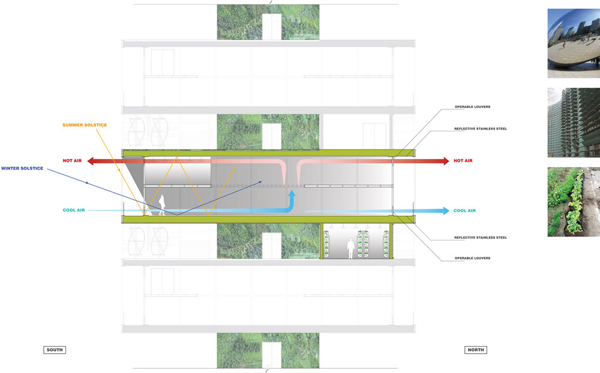Harvest Green Project explores the notion of the “foregrounding” a new agri-food system in and around the strategic urban location of an arterial transit hub. By 2050, there will be globally an additional 3 billion people to feed, and traditional farming simply can’t sustain this increase in population. Therefore, incorporating urban farming prominently into the fabric of the city, and in a synergistic mixed-use development integrated with transit, is a way to re-assert the cultural and environmental importance of locally produced food to the health and sustainability of the city and its residents.
If successfully implemented, projects like the The Harvest Tower, designed by Canada-based firm Romses Architects, can offer the promise of urban renewal, sustainable production of a safe and varied food supply, year round crop production, and the eventual repair of ecosystems that have been sacrificed for large-scale traditional horizontal farming.
The urban design strategies for the proposal are predicated on the view that urban food and energy harvesting needs to be “foregrounded’ into strategic and highly visible locations in the city, such as transit hubs along arterials. The “Harvest Tower” will act as a landmark vertical marker for the development and surrounding neighborhood, while the commercial/office podium roots the development to the surrounding arterial streetwall context.
The concept of “harvest” is explored in the project through the vertical farming of vegetables, herbs, fruits, fish, egg laying chickens, and a boutique goat and sheep dairy facility. In addition, renewable energy will be harvested via green building design elements harnessing geothermal, wind and solar power. The buildings have photovoltaic glazing and incorporate small and large-scale wind turbines to turn the structure into solar and wind-farm infrastructure. In addition, vertical farming potentially adds energy back to the grid via methane generation from composting non-edible parts of plants and animals. Furthermore, a large rainwater cistern terminates the top of the “Harvest Tower” providing on-site irrigation for the numerous indoor and outdoor crops and roof gardens.






















